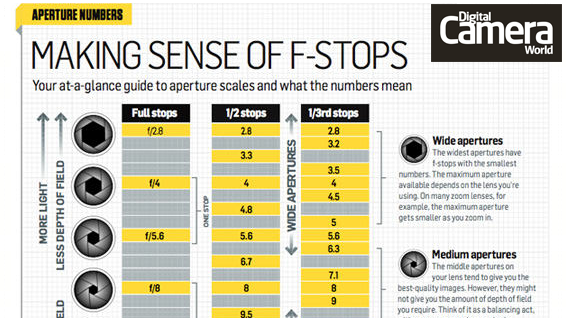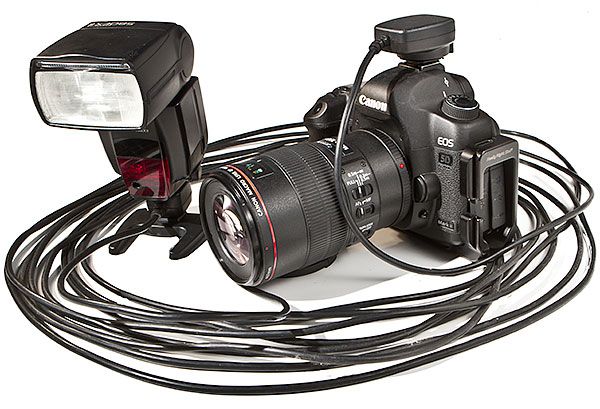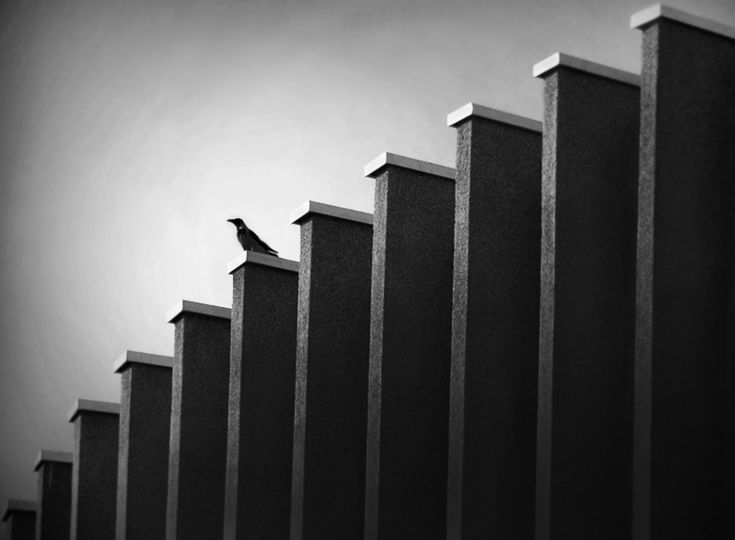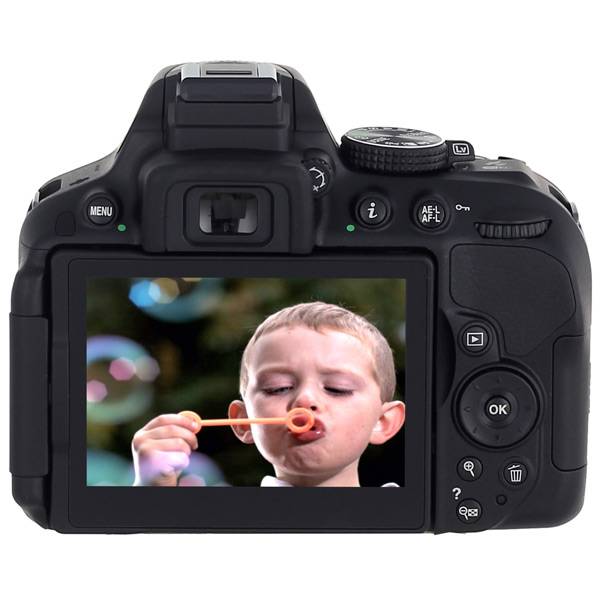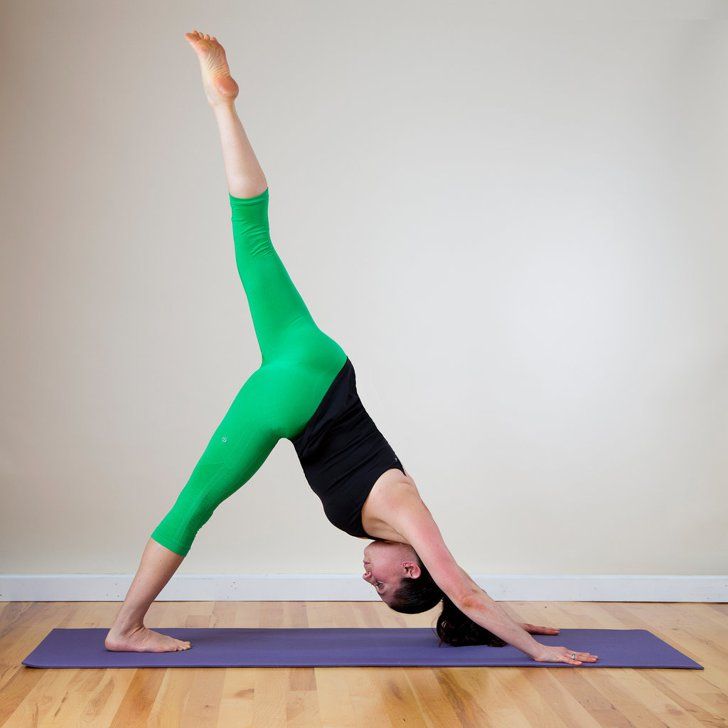What is lens mount
Camera Lens Mounts - Everything You Need to Know About Lens Mounts
With practically all camera manufacturers having launched several different camera systems, there seems to be quite a bit of confusion among photographers in regards to camera lens mounts. This is especially true for things like “throat size” and “inner diameter”, where different measurements are used to wrongly quantify a mount’s potential. Unfortunately, there is a lot of misinformation out there regarding mounts and their exact sizes, which is why I decided to write a detailed article talking about different mounts, their differences and take more precise measurements for different systems to present accurate information.
Table of Contents
What is a Lens Mount?
Simply put, a lens mount is an opening of a specific size on an interchangeable lens camera that allows attaching lenses designed for that mount. Although in the early days of photography lenses were only mechanically attached to cameras without any communication between the two, with the rise of automatic metering and autofocus systems, it was necessary to create electronic contacts on both cameras and lenses to allow them to communicate with each other. As a result, a lens mount became more than just a physical hole, but more like an interface between lenses and cameras.
Today, practically every lens mount for photography is a bayonet mount (the name “bayonet” comes from the type of fitting soldiers used on their rifles to quickly mount bayonets), where three to four tabs are used to lock a lens tightly in place, but other lens attachment systems have been used in the past, such as screw-threaded lock and breech-lock. With a bayonet mount, one aligns a marked section of a lens (typically a colored dot) with the marked section on a camera body, then after coupling the two, twists the lens either in clockwise or counter-clockwise direction (depending on the brand/mount) until it locks into place.
The locking mechanism is mechanical, with a spring-loaded pin locking the lens in place in its proper position, requiring the pin to be retracted when a lens needs to be detached (which is done using a button next to the camera mount). The bayonet mount has a number of advantages compared to other mounts, which is why they are the most popular today. First, it makes it quick and easy to attach and detach lenses. Second, it allows for a tight and precise fit, which is especially important when shooting with modern high-resolution cameras, as any sort of wobble or play could end up negatively affecting parts of the image. And lastly, a bayonet mount also allows for easy incorporation of electronic contacts between lenses and cameras to enable two-way communication.
The bayonet mount has a number of advantages compared to other mounts, which is why they are the most popular today. First, it makes it quick and easy to attach and detach lenses. Second, it allows for a tight and precise fit, which is especially important when shooting with modern high-resolution cameras, as any sort of wobble or play could end up negatively affecting parts of the image. And lastly, a bayonet mount also allows for easy incorporation of electronic contacts between lenses and cameras to enable two-way communication.
Due to the proprietary nature of all camera mounts, each one of them can differ in mounting direction, mount size, flange distance, number of electronic contacts and even where the electronic contacts are physically placed. Let’s take a look at each in more detail.
Mounting Direction
While most lens mounts require attaching lenses by twisting them clockwise, some brands like Nikon have a reversed way of doing it. On one hand, it does not matter which direction a lens is mounted or dismounted, but on the other hand, it might cause some confusion and might take time to get used to it, especially for those who decide to switch brands. Below is a table that summarizes the mounting direction of lenses among the popular camera brands.
Below is a table that summarizes the mounting direction of lenses among the popular camera brands.
Please note that the mounting direction is relative to the front view of the camera.
| Brand | Attaching Direction | Detaching Direction |
|---|---|---|
| Canon | Clockwise | Counter-Clockwise |
| Fujifilm | Clockwise | Counter-Clockwise |
| Leica | Clockwise | Counter-Clockwise |
| Nikon | Counter-Clockwise | Clockwise |
| Olympus | Clockwise | Counter-Clockwise |
| Pentax | Clockwise | Counter-Clockwise |
| Sony | Clockwise | Counter-Clockwise |
Mount Size (Throat Size, Inner and Outer Diameters)
When it comes to mount size, there are a few important measurements that need to be done correctly, especially when a lens mount is being compared to another one (as you want to compare apples to apples). There is throat size, inner diameter and outer diameter, and all of them mean different things. Let’s take a look at different measurement criteria and their differences.
There is throat size, inner diameter and outer diameter, and all of them mean different things. Let’s take a look at different measurement criteria and their differences.
Throat Size
The throat size of a lens mount is the inner diameter of a mount, minus the tabs that are used to mount lenses. Throat size gives us a more accurate representation of the potential of the mount and is important for calculating the angle of incidence, which we will discuss below.
Take a look at the below image to understand how the throat size is measured on a system:
As you can see, the distance measured is between the two tabs on the inner side of the mount.
Inner Diameter
The inner diameter of a lens mount represents the size of the lens opening ignoring the tabs on the mount. This measurement is often provided by camera manufacturers to give us an idea of the overall size of the lens mount.
Below is the image of how the inner diameter of a lens mount is measured:
Please note that the measurement is taken of the outermost inner part of the mount here. Due to the small additional recess within the inner mount in the case of Nikon F, there is an additional loss of 0.5mm to clear it. Hence, while the inner diameter is 47mm as measured above, it is technically 46.5mm between the inner parts of the mount.
Due to the small additional recess within the inner mount in the case of Nikon F, there is an additional loss of 0.5mm to clear it. Hence, while the inner diameter is 47mm as measured above, it is technically 46.5mm between the inner parts of the mount.
Outer Diameter
The outer diameter of a lens mount is the full diameter of the bayonet mount, which in most cameras represents the end of the metal mount. The outer diameter of the mount plays an important role in determining the approximate outer diameter of the rear part of a lens, as it must be able to wrap itself over the outer diameter.
Here is the image of how the outer diameter of a lens is measured:
Again, there is another small recess that is right below the outer part of the mount, but we do not measure the outer diameter from it.
Flange Distance
Flange distance, also known as “flange focal distance”, “flange back distance” or simply “register”, is the distance between the mounting flange (which is the outer part of the lens mount when viewed from the side) and the film/sensor plane. Just like different mounts have differences in throat size, inner and outer diameters, flange distances also often vary greatly between different camera systems.
Just like different mounts have differences in throat size, inner and outer diameters, flange distances also often vary greatly between different camera systems.
Mount Size, Flange Distance and the Angle of Incidence
Now that we have defined the mount size and the flange distance, let’s talk about the pros and cons of large vs small mount sizes, as well as the impact of the flange distance on a system.
The size of the mount is an important factor in a camera system. Generally, a larger mount size allows for larger lenses that can provide more light to the sensor. Hence, faster lenses can be designed by optical engineers. At the same time, mount diameter is not the only variable that impacts lens design – flange distance is also equally important. Shorter flange distance allows lenses to be placed closer to the sensor, which in itself allows lens manufacturers to start building simpler, smaller, lighter and less expensive short-focus lenses instead of the retro focus types.
A shorter flange distance also allows designing thinner cameras, thus making them smaller and lighter compared to cameras with longer flange distances. In addition, it allows lens designers to place a more powerful actuator on lenses for faster autofocusing and makes it possible to adapt lenses from other camera systems with longer flange distances via adapters. Lastly, the throat diameter combined with flange distance determines the maximum possible angle of incidence of the marginal rays from the lens, which is important in designing lenses – generally, the larger the angle of incidence, the easier it is to make high-performance lenses.
One downside of a larger lens mount is lens size and weight issues. The larger the throat diameter, the larger the lens has to be at its mount point, which obviously does impact its overall thickness and weight as well. Also, the shorter flange distance can lead to increased vignetting or discoloration in the corners of an image (although this can be mitigated by making the lens design longer to simulate a longer flange distance), due to sensor microlenses not being able to pass enough light at extreme ray angles.
To understand the importance of a larger mount and a shorter flange distance, please check out the below video from a Nikon engineer that explains the benefits of the Nikon Z system when compared to Nikon F:
When adapting lenses from other mounts, it is important to point out that due to the proprietary nature of autofocus systems, differences in exchange of information between camera body and lens via electronic contacts (the number of which also vary from system to system) and other issues, most adapters end up being “dumb” adapters with manual controls, manufactured by third party companies. Camera manufacturers themselves often provide adapters with the release of shorter flange distance systems to be able to mount lenses from other camera mounts that they developed in the past, but they almost never provide adapters for competing systems.
In addition, some adapters are capable of changing the physical properties of lenses by using glass elements in them, while others make it possible to insert a lens filter (such as neutral density or polarizing filter), making it possible to use filters on wide-angle lenses with oversized front elements, without involving bulky filter mounting rigs and large filters. When adapting lenses from other systems, it is important to make sure that the target lens mount has a longer flange distance in order to be able to achieve infinity focus. Furthermore, the difference in flange distance between the source and the target system has to be big enough to have enough room for an adapter to sit between the lens and the camera for a dumb adapter. Smart adapters that can establish communication between the camera and the adapted lens must have even more legroom for contacts and electronics to fit between the two.
Camera Mount Comparison
Now that we have gone through all the terms and definitions, let’s go ahead and compare different camera mounts based on their throat and inner diameters, as well as flange distance and angle of incidence:
| Description | Throat Diameter | Inner Diameter | Flange Distance | Angle of Incidence | Format |
|---|---|---|---|---|---|
| Leica M | 40. 0mm 0mm | 44.0mm | 27.8mm | 16.05° | Full Frame |
| Fujifilm X | 40.7mm | 43.5mm | 17.7mm | 35.34° | APS-C |
| Minolta SR | 42.0mm | 45.0mm | 43.5mm | 11.69° | Full Frame |
| Sony E | 43.6mm | 46.1mm | 18.0mm | 28.58° | Full Frame |
| Nikon F | 44.0mm | 47.0mm | 46.5mm | 12.14° | Full Frame |
| Pentax K | 44.0mm | 48.0mm | 45.5mm | 12.40° | Full Frame |
| Leica L | 48.8mm | 51.0mm | 19.0mm | 33.13° | Full Frame |
| Canon EF | 50.6mm | 54.0mm | 44.0mm | 16.82° | Full Frame |
| Canon RF | 50.6mm | 54.0mm | 20.0mm | 33.62° | Full Frame |
| Nikon Z | 52.0mm | 55.0mm | 16.0mm | 41.19° | Full Frame |
| Fujifilm G | 62. 1mm 1mm | 65.0mm | 26.7mm | 28.67° | Medium Format |
Note
To find the angle of incidence, I calculated the angle between the throat diameter and the top center of each system’s camera sensor. I assumed all full-frame sensors to be 24mm in height, the Fuji X camera sensor to be 15.6mm in height, and the Fuji G camera sensor to be 32.9mm in height (note that other websites sometimes do this calculation with inner mount diameter rather than the throat diameter, and they may calculate from a corner or the center of the camera sensor rather than the top center).Frequently Asked Questions
Below is a list of FAQs related to lens mounts that I put together for our readers:
What are the different camera mounts?
While many camera mounts have existed in the past, the most popular camera mounts today are: Canon EF, Canon RF, Fujifilm X, Fujifilm G, Leica L, Leica M, Nikon F, Nikon Z, Pentax K and Sony E. Each one differs from each other by a combination of throat diameter and flange distance.
Each one differs from each other by a combination of throat diameter and flange distance.
How do I know which lens mount my camera has?
Find your camera’s brand and model, then search for its manual online. The manual should contain information relative to the mount, as well as a list of compatible lenses. Another option is to look up the lens that is mounted on your camera – its description should contain the name of the mount.
Which lens mount is the best?
While all lens mounts have their strengths and weaknesses, lens mounts with the largest throat size and shortest flange distance typically provide the most flexibility for lens design. At the moment, Nikon Z, Canon RF and Leica L mounts have the largest throat diameter and shortest flange distance among full-frame cameras.
Are all Nikon lens mounts the same?
No, they are not. Nikon has two different lens mounts: Nikon F and Nikon Z. The former is for Nikon’s DSLR cameras, while the latter is for Nikon’s newer mirrorless cameras.
Nikon has two different lens mounts: Nikon F and Nikon Z. The former is for Nikon’s DSLR cameras, while the latter is for Nikon’s newer mirrorless cameras.
Are camera lenses universal?
Unfortunately, they are not. Aside from a couple of alliances, most camera manufacturers typically create their own proprietary mounts, resulting in many different lenses for different lens mounts. However, some third-party lens manufacturers make the same lens for different camera mounts.
Can you mount a Canon lens on a Nikon camera?
It depends on the lens mount. You cannot mount a Canon EF lens on a Nikon F camera, because the Canon EF mount has a shorter flange distance. However, it is technically possible to mount a Canon RF lens on a Nikon Z camera.
What is a lens mount adapter?
A lens mount adapter is a device that allows a lens from one camera mount to be used on a camera with a different mount. While some manufacturers provide lens mount adapters with full compatibility and autofocus features, most adapters are “dumb”, and cannot transmit electronic data.
While some manufacturers provide lens mount adapters with full compatibility and autofocus features, most adapters are “dumb”, and cannot transmit electronic data.
Please note that the above information is based on my research and submitted data from our readers. If you use a system that is not listed in the table and would like to help expand it with more data, please use the images in this article to properly measure the lens mount, then provide the information in the comments section below. We will do our best to update the table as soon as possible!
Introduction to Lens Mounts and Lens Adapters
By Bjorn Petersen | Updated Mon, 04/08/2019
Share
You may be thinking, "What a boring subject for an article," and you would be right. However, as boring as the interface between your camera and lens might be, the significance of your camera's specific mount, along with which lenses can be used on your camera, which lenses can be adapted to your camera, and why some lenses work and others do not, can prove to be a more interesting subject that may even inform which camera or lens system you eventually buy.
What Does a Lens Mount Do?
A lens mount is a standard or proprietary interface used by camera and lens manufacturers to ensure a secure and accurate means for attaching a lens to a camera body. Each camera system nowadays uses its own unique mount that limits compatibility between lenses and other manufacturers’ cameras, and also enables electronic communication between the lens and camera to achieve accurate focus and exposure.
Left to right: Canon EF, Nikon F, and Sony E bayonet-style lens mountsMost lens mounts in current use are bayonet style, in which a lens is attached to the camera body by registering the lens in proper orientation with the camera body, then giving a slight twist of about 45-90° to lock the lens in place. Prior to the bayonet mount, a couple of other mounting styles were commonly used, namely thread and breech-lock mounts. Thread mounts, or screw mounts, are self-referential and describe the action of threading your lens onto the camera body, much in the same way you thread a nut onto a bolt.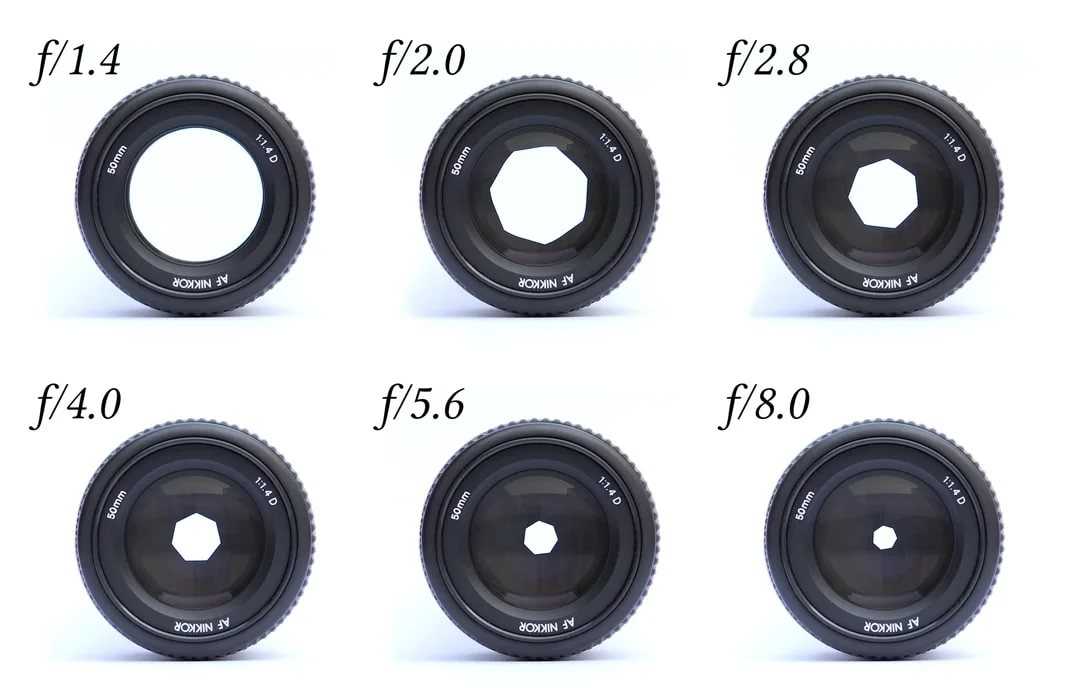 Breech-lock mounts are more closely related to bayonet mounts; however, they use a self-contained rotating ring on the lens itself to tighten the lens onto the camera body with friction.
Breech-lock mounts are more closely related to bayonet mounts; however, they use a self-contained rotating ring on the lens itself to tighten the lens onto the camera body with friction.
Bayonet mounts are the most favored of these three mounting types, due to the ease and speed of installing and removing lenses from camera bodies, the ability to incorporate electronic contacts using this attachment method, and the repeatable precision afforded by a simpler design.
Left to right: Breech-lock mount on a Mamiya RB lens and an M39 screw mount on a Leica lensWhat’s in a Lens Mount?
Besides connecting a lens to a camera and sporting a certain design style, lens mounts also have a number of distinctions from manufacturer to manufacturer. Size is the main differentiator between the various mounts, and is a slightly more complex measurement than you may imagine. The number of tabs in a specific bayonet can vary from one manufacturer to another (although most use three tabs), the direction in which you rotate the lens to connect with the camera body varies among brands, and the incorporation of electronic contacts will also be unique to the camera and lens manufacturer. Furthermore, each mount corresponds, arguably, to the most important element of this article, a specific flange focal distance (FFD). This measurement, which describes the length from the mounting flange (the edge of the lens mount on the camera body) to the image sensor or film plane, varies from manufacturer to manufacturer, and is one of the true limiters of the interchangeability of lenses with specific cameras.
Furthermore, each mount corresponds, arguably, to the most important element of this article, a specific flange focal distance (FFD). This measurement, which describes the length from the mounting flange (the edge of the lens mount on the camera body) to the image sensor or film plane, varies from manufacturer to manufacturer, and is one of the true limiters of the interchangeability of lenses with specific cameras.
The flange focal distance of each camera system is factored into subsequent lens designs, and is a constant length used by each manufacturer to ensure accurate focus from a specific lens’s minimum focusing distance to infinity. Using a lens with a specific FFD on a camera system with a shorter flange distance, you will not be able to achieve infinity focus. This distinction is the key element in which lenses can be used on camera systems other than the original one the lens was designed for, via a lens adapter.
| Current Lens Mounts | Popular Historic Lens Mounts | ||||
| Lens Mount | Flange Focal Distance | Mount Type | Lens Mount | Flange Focal Distance | Mount Type |
| Nikon Z | 16.0mm | Bayonet | Pentax Q | 9.2mm | Bayonet |
| Nikon 1 | 17.0mm | Bayonet | Samsung NX | 25.5mm | Bayonet |
| FUJIFILM X | 17.7mm | Bayonet | M39 (26tpi) | 28.8mm | Screw |
| Canon EF-M | 18.0mm | Bayonet | Contax G | 29.0mm | Bayonet |
| Sony E | 18.0mm | Bayonet | Nikon S | 34. 85mm 85mm | Bayonet |
| Hasselblad X | 18.14mm | Bayonet | Four Thirds | 38.67mm | Bayonet |
| Micro Four Thirds | 19.25mm | Bayonet | Canon FD | 42.0mm | Bayonet or breech-lock |
| Leica L | 20.0mm | Bayonet | Minolta SR | 43.5mm | Bayonet |
| Canon RF | 20.0mm | Bayonet | Exakta | 44.7mm | Bayonet |
| FUJIFILM G | 26.7mm | Bayonet | M42 (x1) | 45.46mm | Screw |
| Leica M | 27.8mm | Bayonet | Contax C/Y | 45.5mm | Bayonet |
| Canon EF | 44.0mm | Bayonet | DKL | 45.7mm | Bayonet |
| Sigma SA | 44.0mm | Bayonet | Olympus OM | 46.0mm | Bayonet |
| Minolta/Sony A | 44.5mm | Bayonet | Leica R | 64. 0mm 0mm | Bayonet |
| Pentax K | 45.46mm | Bayonet | Contax 645 | 64.0mm | Bayonet |
| Nikon F | 46.5mm | Bayonet | Bronica ETRS | 69.0mm | Bayonet |
| Leica S | 50.0mm | Bayonet | Pentacon Six/Exakta 66 | 74.1mm | Breech-lock |
| ARRI PL | 52.0mm | Breech-lock (cine) | Hasselblad V | 74.9mm | Bayonet |
| T Mount | 55.0mm | Screw (M42 x 0.75) | Pentax 6 x 7 | 84.95mm | Bayonet |
| Hasselblad H | 61.63mm | Bayonet | Bronica SQ | 85.0mm | Bayonet |
| Mamiya 645 | 63.3mm | Bayonet | Mamiya RZ67 | 108.0mm | Bayonet |
| Pentax 645 | 70.87mm | Bayonet | Mamiya RB67 | 111.0mm | Bayonet or breech-lock |
Lens Adapters
Spurred by the somewhat recent advent of mirrorless camera systems, a renewed interest in the ability to use a wide array of third-party lenses has also occurred. Due to the self-referential design of these cameras, the lack of having a mirror in a camera body design affords, besides a more compact overall design, a shorter FFD. By having this shorter registration distance, you can theoretically mount any lens with a longer FFD on a camera with shorter FFD through the use of a lens adapter.
Due to the self-referential design of these cameras, the lack of having a mirror in a camera body design affords, besides a more compact overall design, a shorter FFD. By having this shorter registration distance, you can theoretically mount any lens with a longer FFD on a camera with shorter FFD through the use of a lens adapter.
The lens adapter effectively serves to make up the difference in focal flange distance between the camera and lens—for example, a Nikon F lens to Sony E adapter makes up the difference of 28.5mm to provide the proper total 46.5mm of focal flange distance for a Nikon F-mount lens to achieve infinity focus. While this is the ideal situation, to mount lenses with a longer FFD on cameras with a shorter FFD, adapters do exist that allow you to physically attach lenses with shorter FFD measurements to camera bodies with a longer FFD. The caveat with these adapters is that you will not be able to achieve infinity focus without the inclusion of a corrective element in the adapter itself, and it is unlikely the quality of this corrective element will match the quality of the lens being mounted. However, without the corrective lens in place, this combination will afford the ability to work at focusing distances less than infinity, since the lens adapter is now functioning as an extension tube.
However, without the corrective lens in place, this combination will afford the ability to work at focusing distances less than infinity, since the lens adapter is now functioning as an extension tube.
Top left to bottom right: Metabones Speed Booster for Canon EF to Sony E, Metabones Nikon F to Sony E adapter, Fotodiox Nikon F to Canon EF adapter with Dandelion Focus Chip, and Fotodiox M39 to Leica M adapter
With this basic concept in mind, lens adapters can also be substantially more sophisticated and maintain electronic communication between the adapted lens and body through the use of dandelion chips, with some adapters even capable of retaining a lens’s autofocus and image-stabilization capabilities. On the other hand, completely manual adapters will not convey any information between the camera and adapted lens, forcing you to manually focus and adjust the aperture settings on a lens, and work in manual or aperture-priority mode on the camera.
One additional type of adapter that has gained tremendous attention over the past few years is a style designed exclusively for APS-C and smaller format mirrorless cameras, most commonly Sony E, Fujifilm X, and Micro Four Thirds systems, that has been popularized by Metabones and Mitakon Zhongyi. With the exception of Sony E-mount now being featured on full-frame cameras, these mounts typically correspond to crop-sensor sizes and, as such, are associated with terms like “crop factor” and “equivalent focal length.” This batch of lens adapters strives to make these terms somewhat moot by incorporating a condensing lens into their design to minimize, or in some cases eliminate, the crop factor and increase the amount of light reaching the sensor. This is accomplished by projecting all of the light gathered by the lens onto the image sensor, rather than just simply losing the light that would typically be cropped out by the smaller sensor dimensions.
With the exception of Sony E-mount now being featured on full-frame cameras, these mounts typically correspond to crop-sensor sizes and, as such, are associated with terms like “crop factor” and “equivalent focal length.” This batch of lens adapters strives to make these terms somewhat moot by incorporating a condensing lens into their design to minimize, or in some cases eliminate, the crop factor and increase the amount of light reaching the sensor. This is accomplished by projecting all of the light gathered by the lens onto the image sensor, rather than just simply losing the light that would typically be cropped out by the smaller sensor dimensions.
Important about bayonet lens mount
Almost all manufacturers produce several different camera systems, and photographers sometimes get confused about lens mounts for different models. Unfortunately, there is a lot of misinformation about the mounting and exact dimensions of these mounts. Let's figure it out. Professional photographer Nasim Mansurov talks in detail about bayonet mounts and their differences.
What is a lens mount?
Simply put, a lens mount is a hole of a certain size on an interchangeable lens camera that allows you to attach lenses designed for that mount. Although previously lenses were mechanically attached to cameras, with the advent of auto-measurement and autofocus systems, it was necessary to create electronic contacts on cameras and lenses. As a result, the lens mount is more than just a physical hole - it's an interface between lenses and cameras.
Today, almost every photographic lens mount is a bayonet mount, which uses three or four tabs ("petals") to tightly fix the lens. You need to align the marked area of the lens (usually a colored dot) with the marked area on the camera body, then, after connecting them, rotate the lens clockwise or counterclockwise until it locks.
Lens mount terminology: Red - outside diameter; Green - inner diameter; Yellow - electronic contacts; Blue - petals for mount
Locking mechanism - mechanical, with a spring-loaded pin that locks the lens in place in the correct position. The bayonet mount has a number of advantages over other mounts, which is why they are the most popular. First, it allows you to quickly and easily attach and remove the lens. Secondly, it provides a tight and precise fit, which is especially important when shooting with modern high-resolution cameras, as any wobble can adversely affect the image. Finally, the bayonet mount, among other things, makes it easy to include electronic contacts between lenses and cameras for two-way communication.
The bayonet mount has a number of advantages over other mounts, which is why they are the most popular. First, it allows you to quickly and easily attach and remove the lens. Secondly, it provides a tight and precise fit, which is especially important when shooting with modern high-resolution cameras, as any wobble can adversely affect the image. Finally, the bayonet mount, among other things, makes it easy to include electronic contacts between lenses and cameras for two-way communication.
Each mount can differ in mounting direction, mounting size, flange spacing, number of electronic contacts, and even where the electronic contacts are physically located.
Mounting direction
While most mount by turning clockwise, some brands such as Nikon use the reverse method. On the one hand, it doesn't matter in which direction the lens is mounted or removed, but on the other hand, it can cause some confusion due to the photographer's habits.
Attachment size (neck size, inside and outside diameters)
When it comes to attachment size, there are a few important measurements that must be taken correctly. There is a throat size, inner diameter and outer diameter, and they all mean different things. Let's take a look at the various measurement criteria and their differences.
There is a throat size, inner diameter and outer diameter, and they all mean different things. Let's take a look at the various measurement criteria and their differences.
Throat size
Lens mount neck size is the inner diameter minus the projections that are used for the mount itself. It gives us a more accurate idea of the anchoring potential and is essential for the calculation of the wrap angle, which we will discuss below.
Look at the image below to understand how the neck size is measured.
As you can see, the measured distance is between the two tabs on the inside of the mount.
Inner diameter
The inner diameter of the mount corresponds to the size of the lens opening, excluding the protrusions on the mount. This measurement is often provided by camera manufacturers to give us an idea of the overall size of a lens mount. Below is a picture of how it is measured.
Please note that the measurement here is the outermost inner part of the mount.
OD
The OD of the lens mount is the full diameter of the bayonet mount, which on most cameras is the end of the metal mount. The outer diameter of the holder plays an important role in determining the approximate outer diameter of the back of the lens as it must be screwed onto it.
This measures the outside diameter of the lens.
Again, there is another small indentation that is just below the outside of the mount, but we don't measure the outer diameter from it.
Flange distance
Flange distance, also known as flange focal length, flange end distance, or simply register, is the distance between the mounting flange, which is the outer part of the lens mount when viewed from the side, and flat sensor/film. Flange distances often vary greatly between chamber systems.
Mount dimensions, flange spacing and angle of coverage
Generally, a larger mount allows for larger lenses that can let in more light. At the same time, the diameter of the mount is not the only variable that affects lens design - the distance between the flanges is just as important. Shorter flange spacing allows lenses to be placed closer to the sensor, allowing manufacturers to create simpler, smaller, lighter, and less expensive short throw lenses instead of retro focus types.
At the same time, the diameter of the mount is not the only variable that affects lens design - the distance between the flanges is just as important. Shorter flange spacing allows lenses to be placed closer to the sensor, allowing manufacturers to create simpler, smaller, lighter, and less expensive short throw lenses instead of retro focus types.
Shorter flange spacing also allows thinner chambers to be designed, making them smaller and lighter than other chambers. It also allows lens designers to place a more powerful motor on lenses for faster autofocus, and to adapt lenses from other camera systems with longer flange distances via adapters. Finally, the diameter of the throat, in combination with the distance between the flanges, determines the maximum possible angle of incidence of the edge rays from the lens, which is important in their design - as a rule, the larger the angle, the easier it is to create high-performance lenses.
The disadvantage of the larger lens mount is its size and weight. The larger the throat diameter, the larger the lens must be at the attachment point, which obviously also affects its overall thickness and weight. In addition, shorter flange spacing may result in increased vignetting or discoloration in the corners.
The larger the throat diameter, the larger the lens must be at the attachment point, which obviously also affects its overall thickness and weight. In addition, shorter flange spacing may result in increased vignetting or discoloration in the corners.
When mounting a lens with one mount to a camera with another, it is important to note that while some manufacturers provide adapters with full compatibility and autofocus functionality, most adapters are "dumb" and cannot transfer electronic data.
Camera manufacturers themselves often produce adapters with shorter flanged distance systems to allow them to mount lenses on other camera mounts they have developed in the past, but they almost never provide adapters for competing systems.
In addition, some adapters are capable of changing the physical properties of lenses by using glass elements in them, while others allow the insertion of a filter.
When adapting lenses from other systems, it is important to ensure that the target lens mount has a larger flange distance to allow focusing to infinity.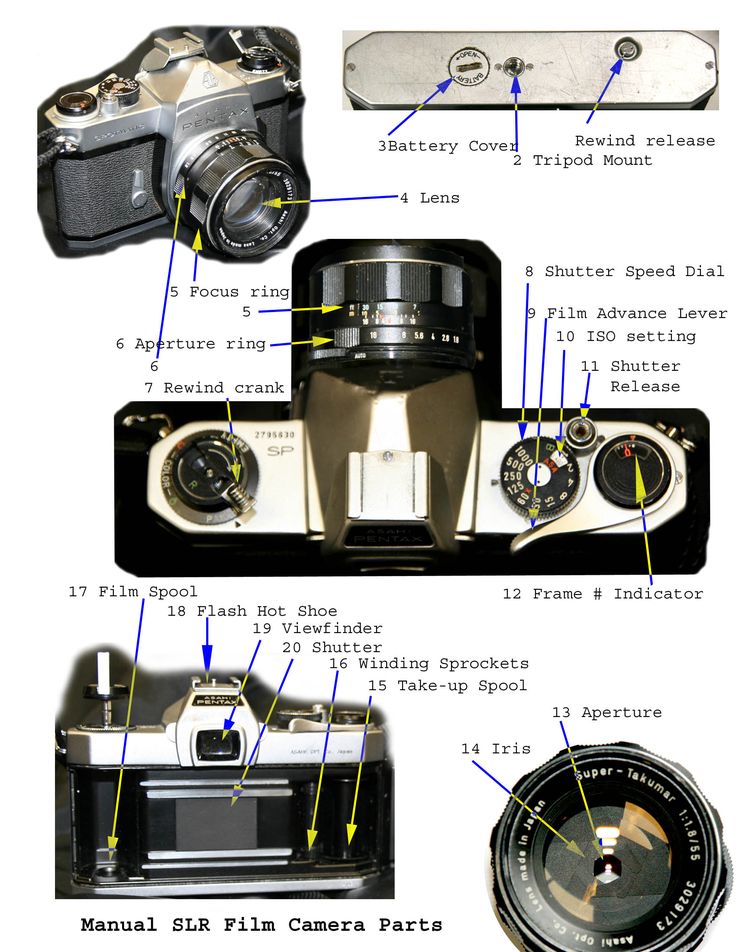
Conclusion
Most camera manufacturers typically create their own proprietary mounts, resulting in many different lenses for different mounts. However, some third party lens manufacturers make the same lenses for different camera mounts.
While all lens mounts have their strengths and weaknesses, lens mounts with the largest throat size and smallest flange spacing typically offer the most flexibility in lens design.
Plastic lens mounts are as good as metal
An article has recently become very popular among amateur photographers, which questions the bad reputation of plastic lens mounts. This article appeared on lensrentals.com and is about the general consensus that a metal mount, or lens mount, is better than a plastic lens mount. The author of the article claims that this is not the case.
Philosophers know that before starting a long argument, both sides must agree on the meaning of terms. Otherwise, nothing will come out of this dispute. Let's say in this article the words " bayonet ” and mount ” are given different meanings (although in common practice they are considered synonymous).
Let's say in this article the words " bayonet ” and mount ” are given different meanings (although in common practice they are considered synonymous).
- “ Bayonet ” refers to the metal part that attaches to the camera lens hole. In Russian, it sounds the same - bayonet.
- The word “ Mount ” refers to the part of the lens that attaches to this metal mount. In Russian, this is a lens mount.
All plastic fasteners
We won't be talking about lenses in this article that are usually considered "plastic mount lenses" (those with both the "mount" and "bayonet" made of plastic material). These are, for example, Canon 18-55mm kit lenses or cheap but good Canon 50mm F1.8 prime lenses. Do not think that we will now begin to convince you. that such plastic mounts are as good as metal ones.
Nikon and Canon kit lenses have all-plastic mounts.
The cheaper and better Canon 50mm f/1. 8 also has plastic mounts.
8 also has plastic mounts.
Half plastic mounts
In this article, a plastic mount, or bottom, refers to those lenses that are usually referred to as lenses with a metal mount. Such as Canon 24-70 f/2.8 L and Tamron 24-70mm f/2.8. The fact is that for many lenses, in fact, only a thin part of the hole is made of metal, which holds the lens attached to the camera. This metal part is usually screwed to the plastic base. The article argues that such mounts do not break as often as those in which the entire back is made of metal.
“Metal part”
Tamron 24mm f/2.8 lens mount half made of metal.
“Mounts to the plastic base”
If you remove the metal part, you can see that it is attached to the plastic base (photo: lensrentals.com)
Full metal mount -
ohm refers to very expensive high end lenses such as Zeiss ZE and ZF lenses, Nikkor AF-S 14-24mm, Canon 24-70 f/2.8 L II and so on.
The Nikkor AF-S 24-70mm f/2. 8 G ED mount is made entirely of metal. Although at first glance it is not clear whether it is completely metal or half. But it's not that important.
8 G ED mount is made entirely of metal. Although at first glance it is not clear whether it is completely metal or half. But it's not that important.
So we can say that the author of the article on Lens Rentals is really right and lens mounts, which are half made of metal, do not fall out of the mount so often. like all metal. All-plastic mounts, yet the most fragile and are used only on cheap lenses.
Half-metal fasteners, easier to fix when broken
The article also made a very interesting point. For example, lens mounts that are semi-metal (those with a metal mount screwed to a plastic base) are known to be much more practical than high-end all-metal camera mounts. If the all-metal mount breaks, the entire lens structure is deformed, which is time-consuming and expensive to repair. If only the plastic that is under the metal mount breaks, then the damage will be local and the change of the desired part will take only 15 minutes.
As a result, we can conclude that not all the metal that glitters.

